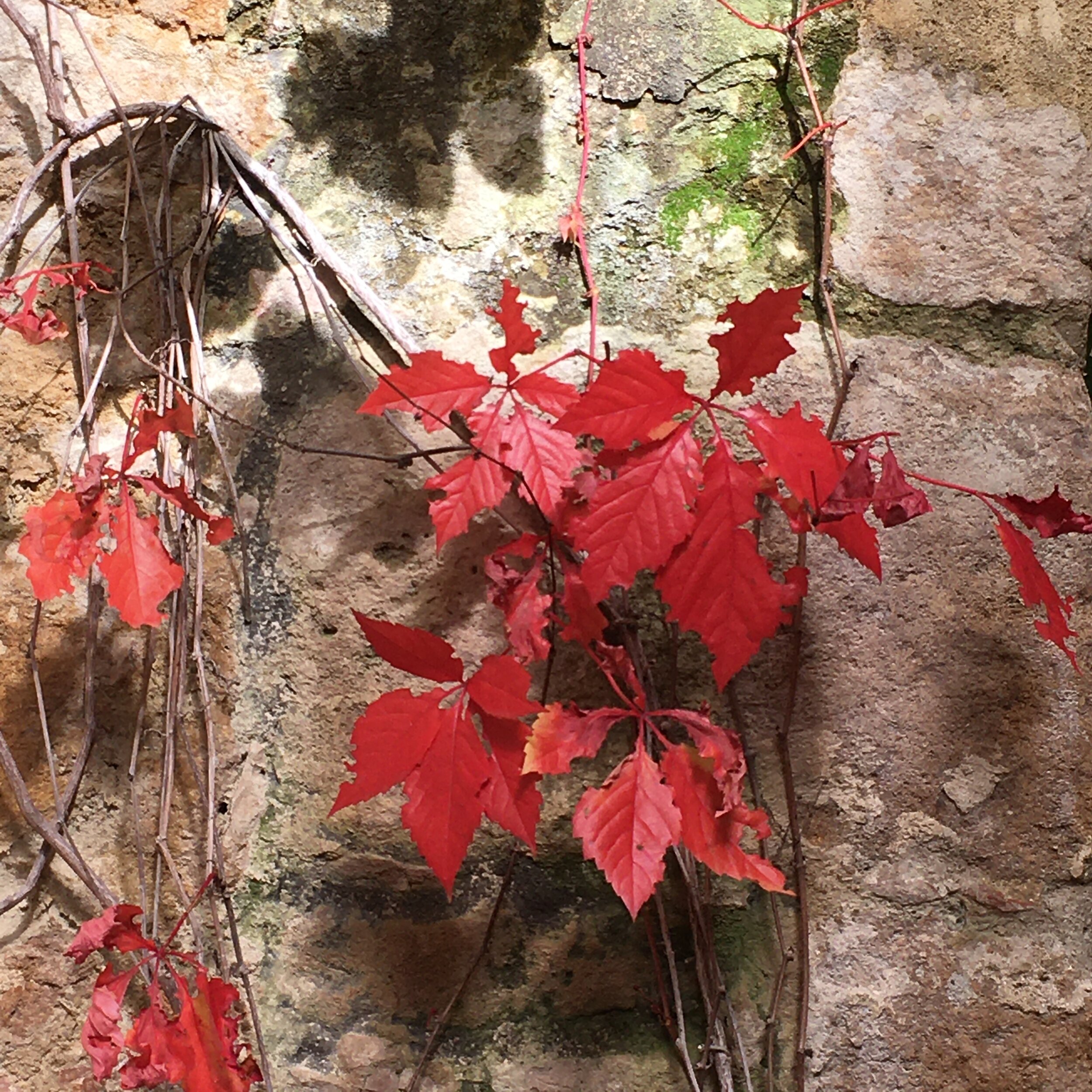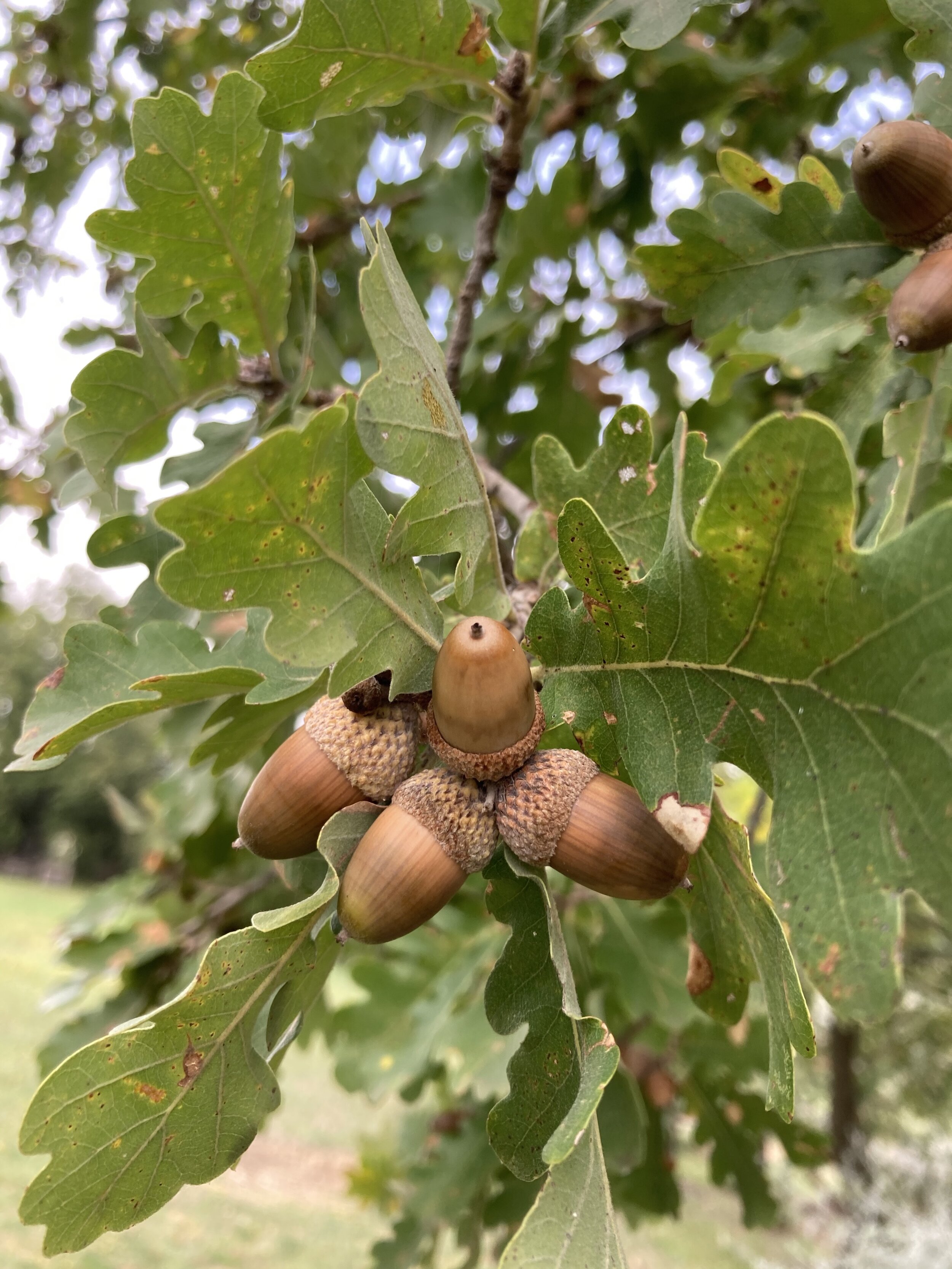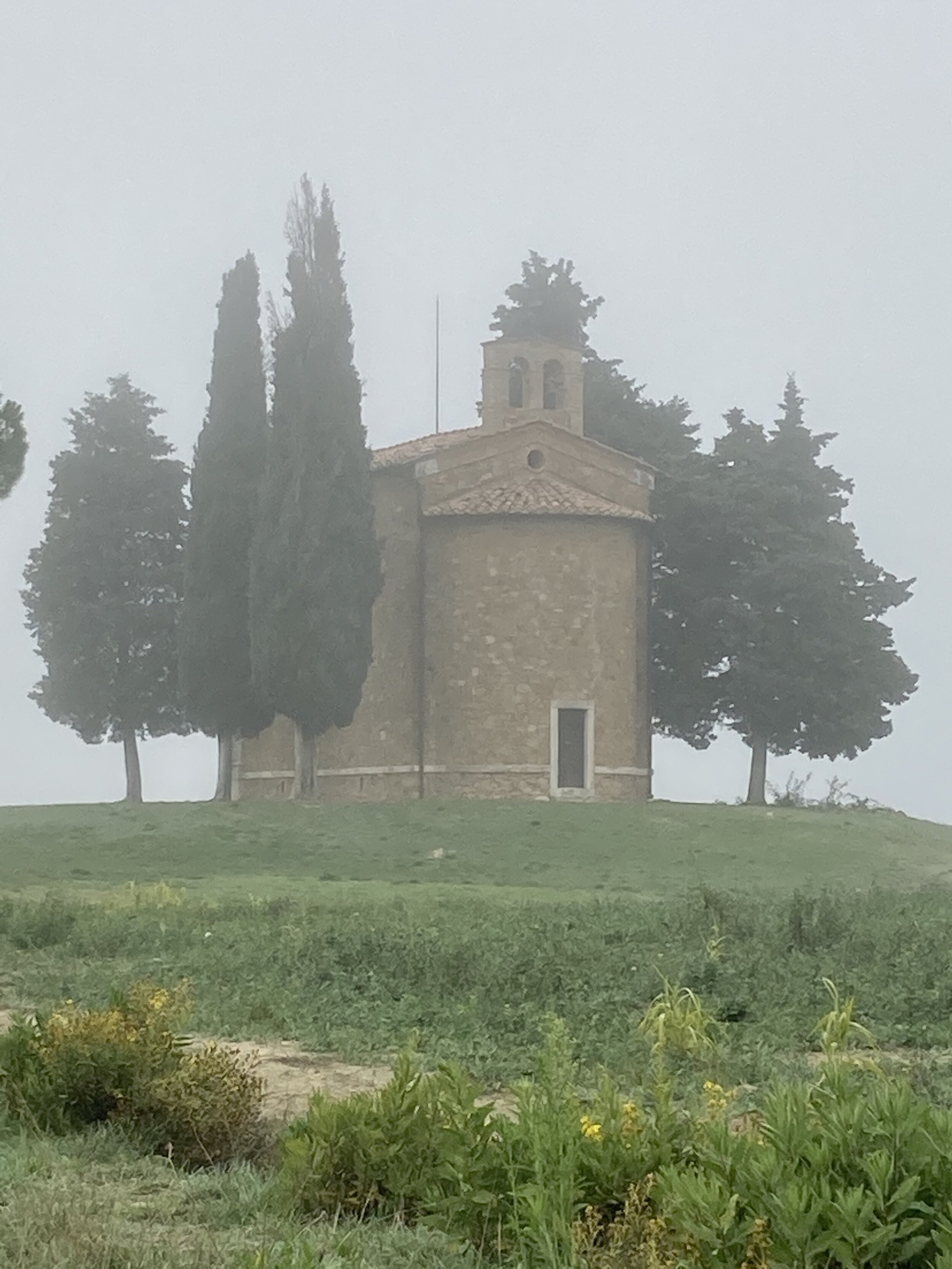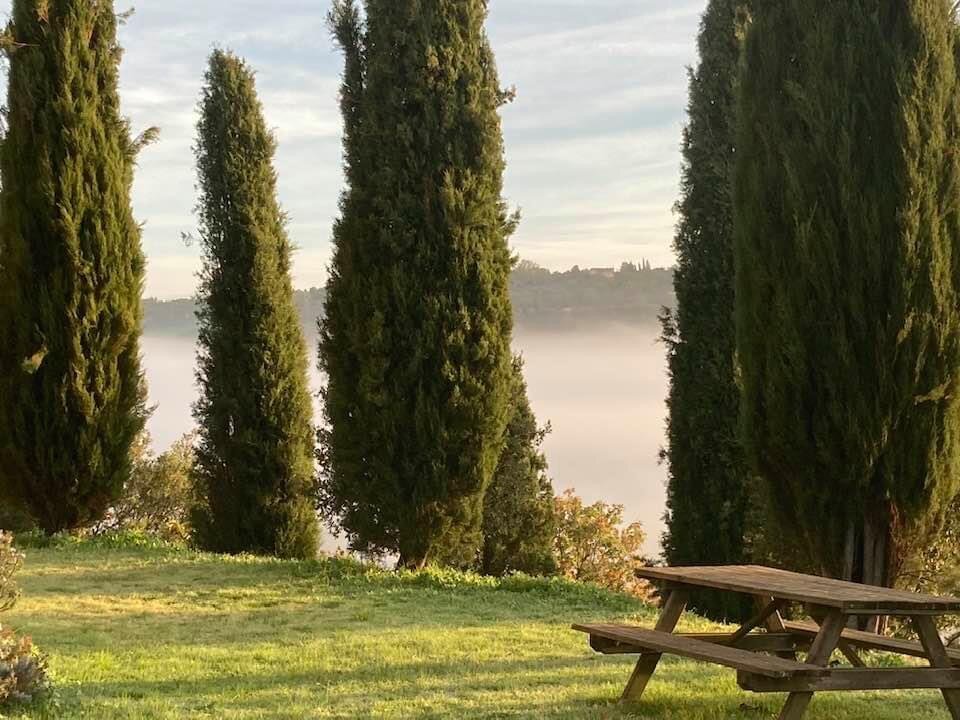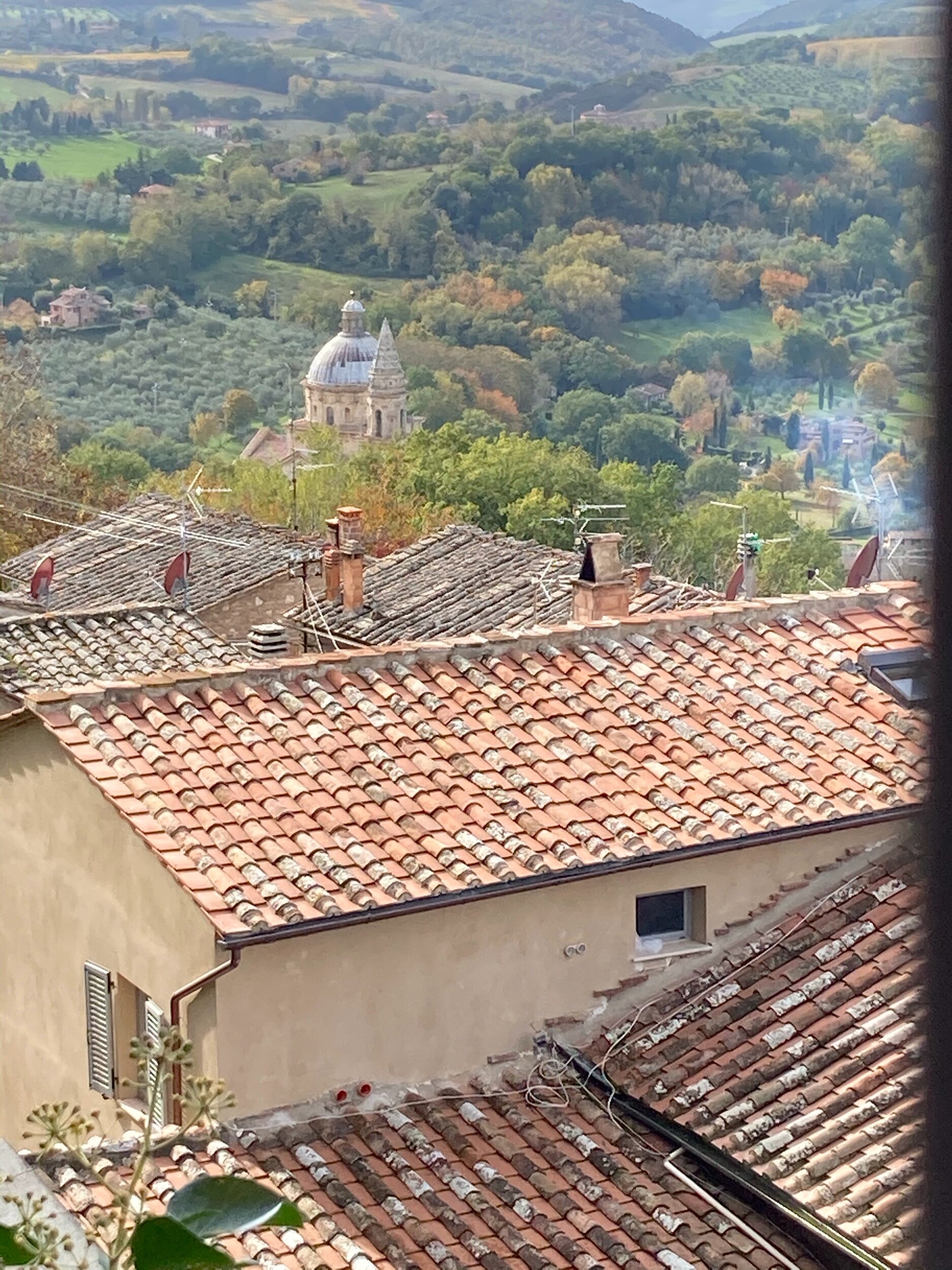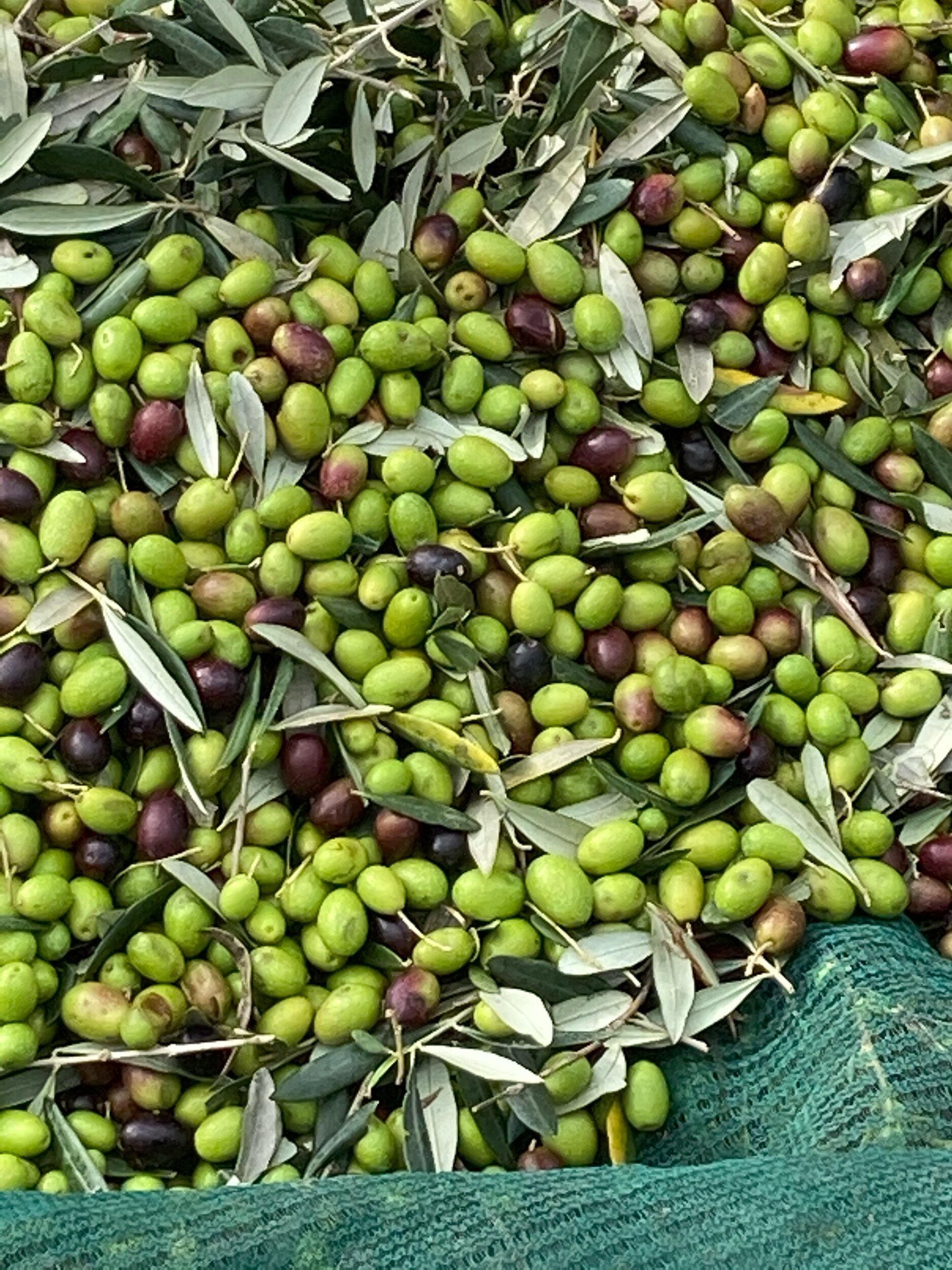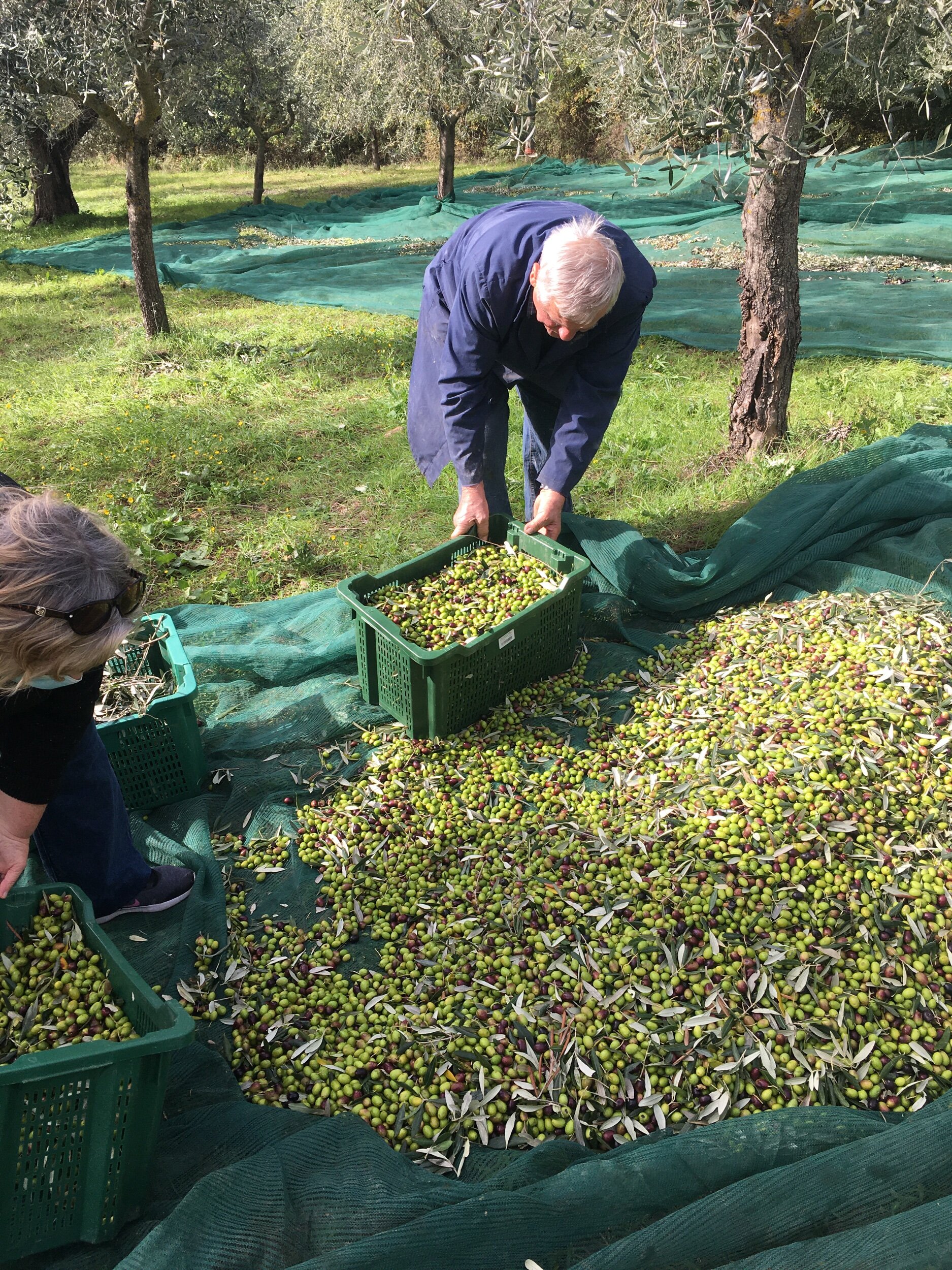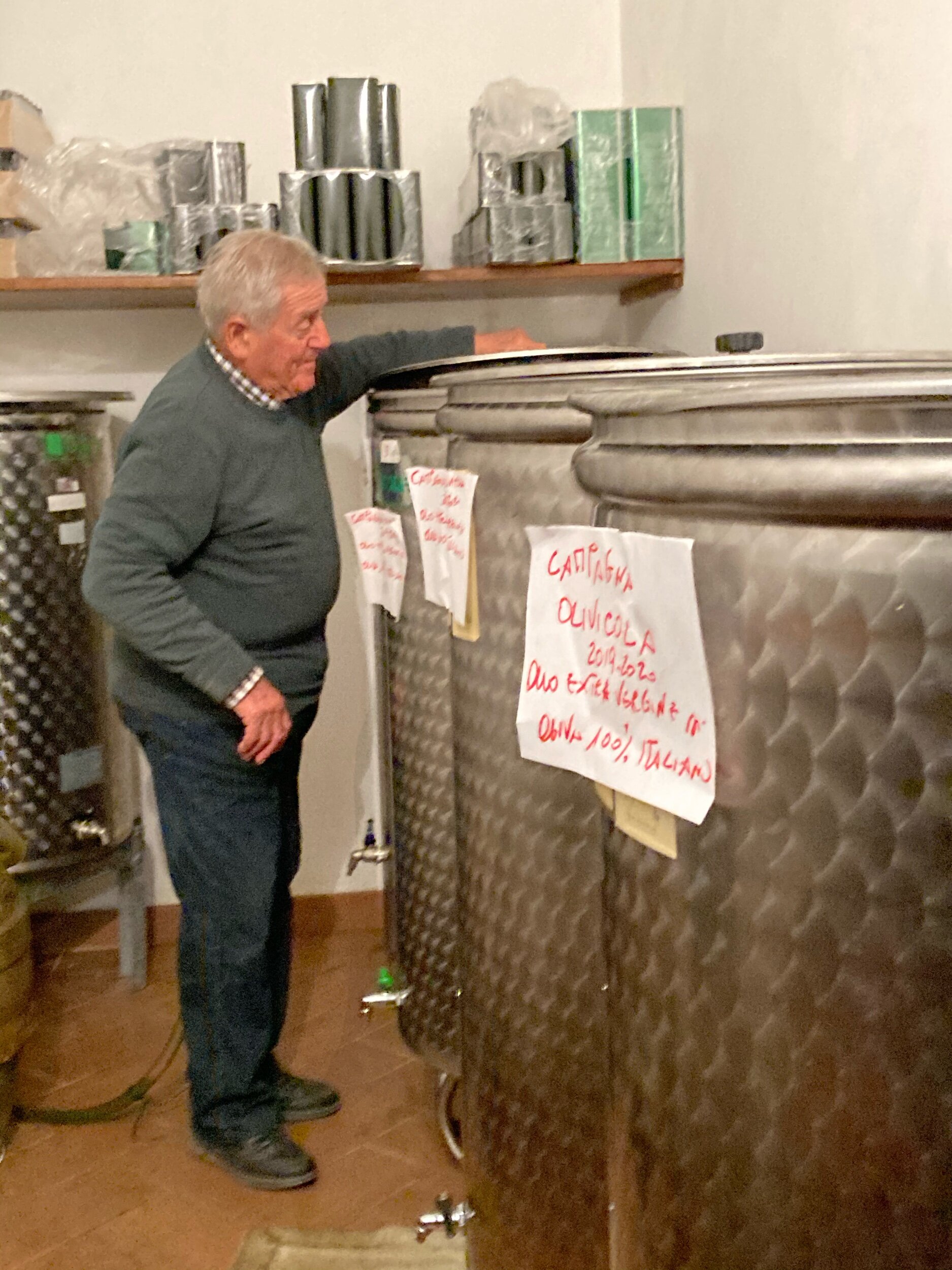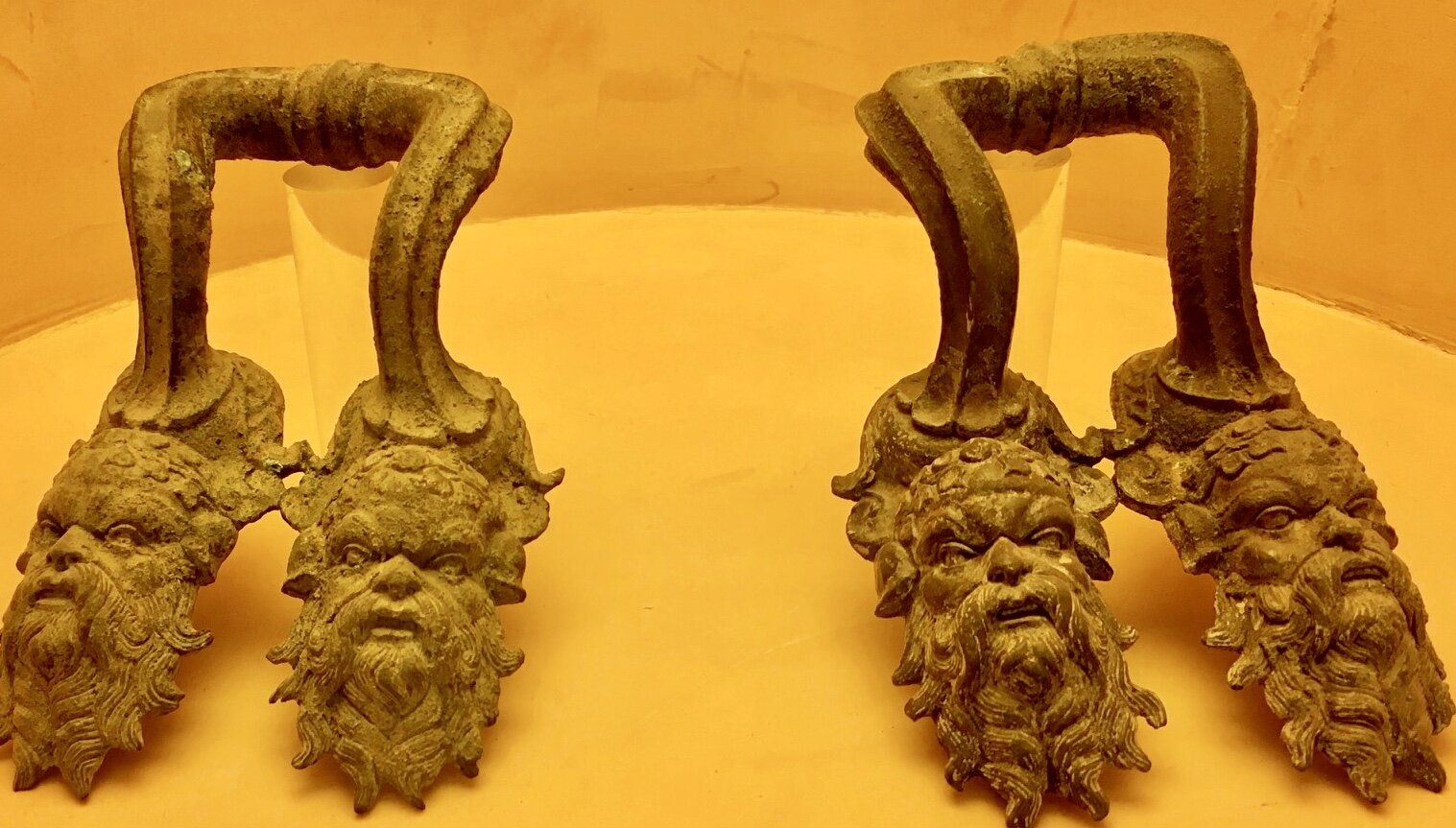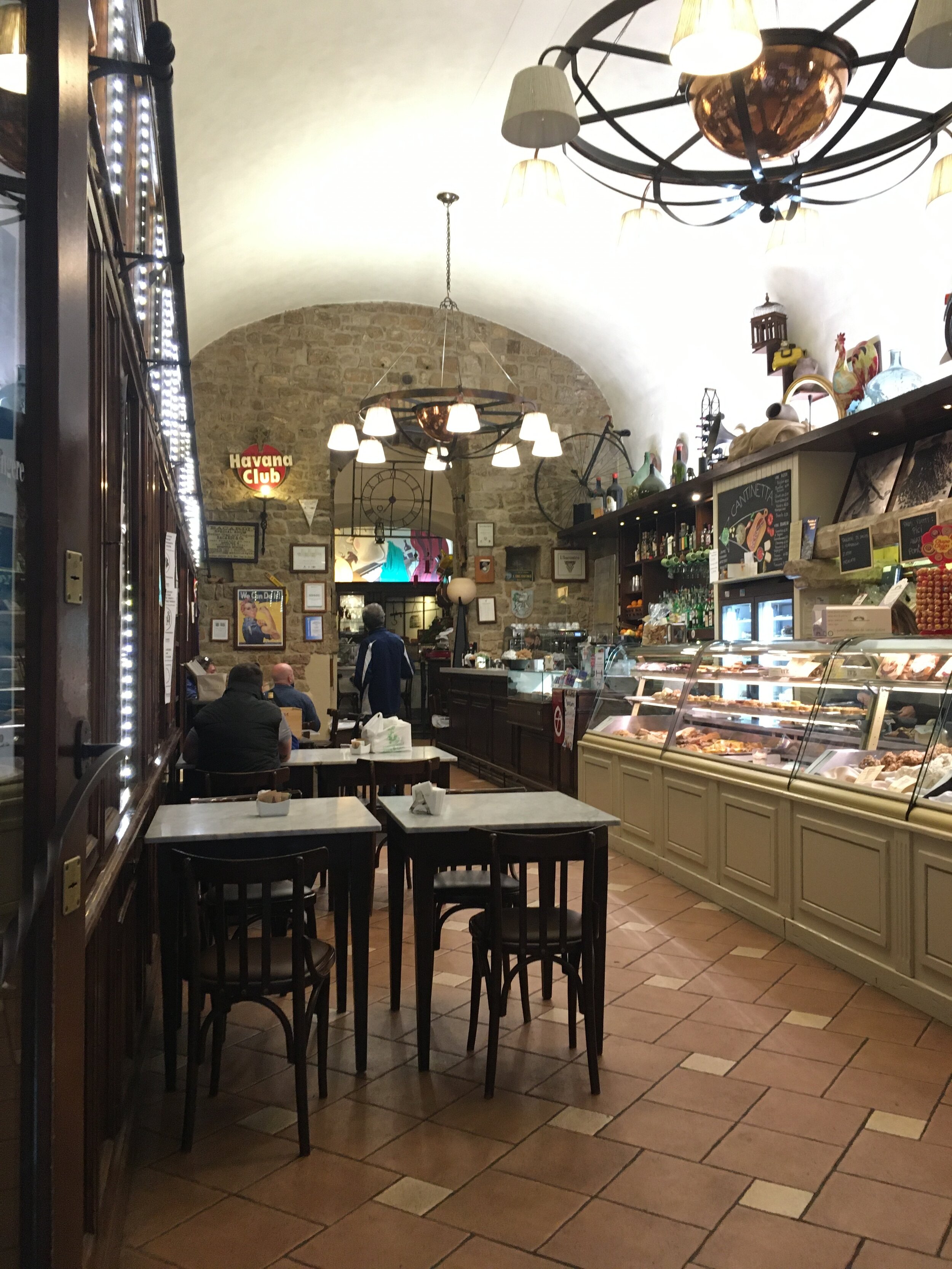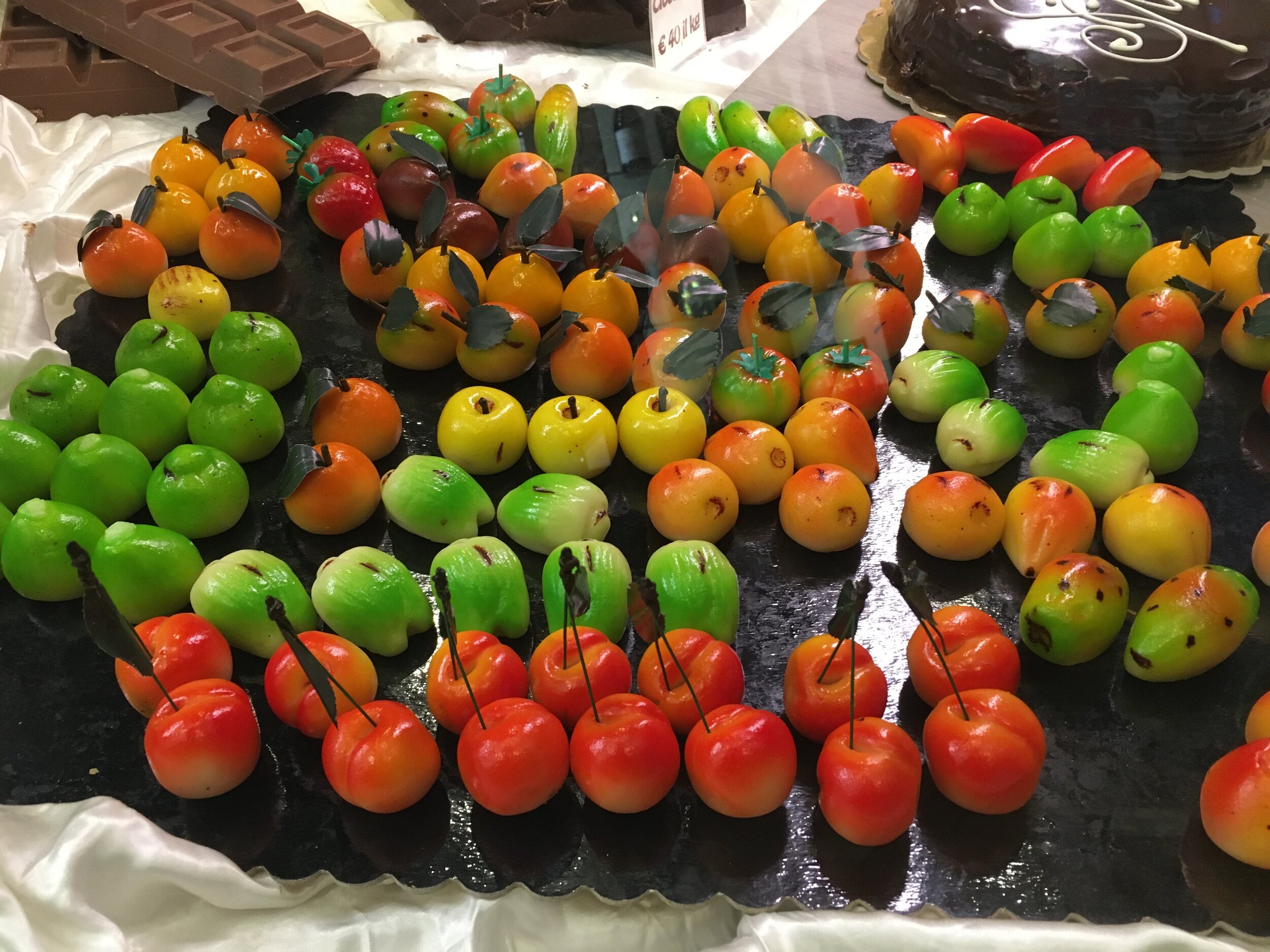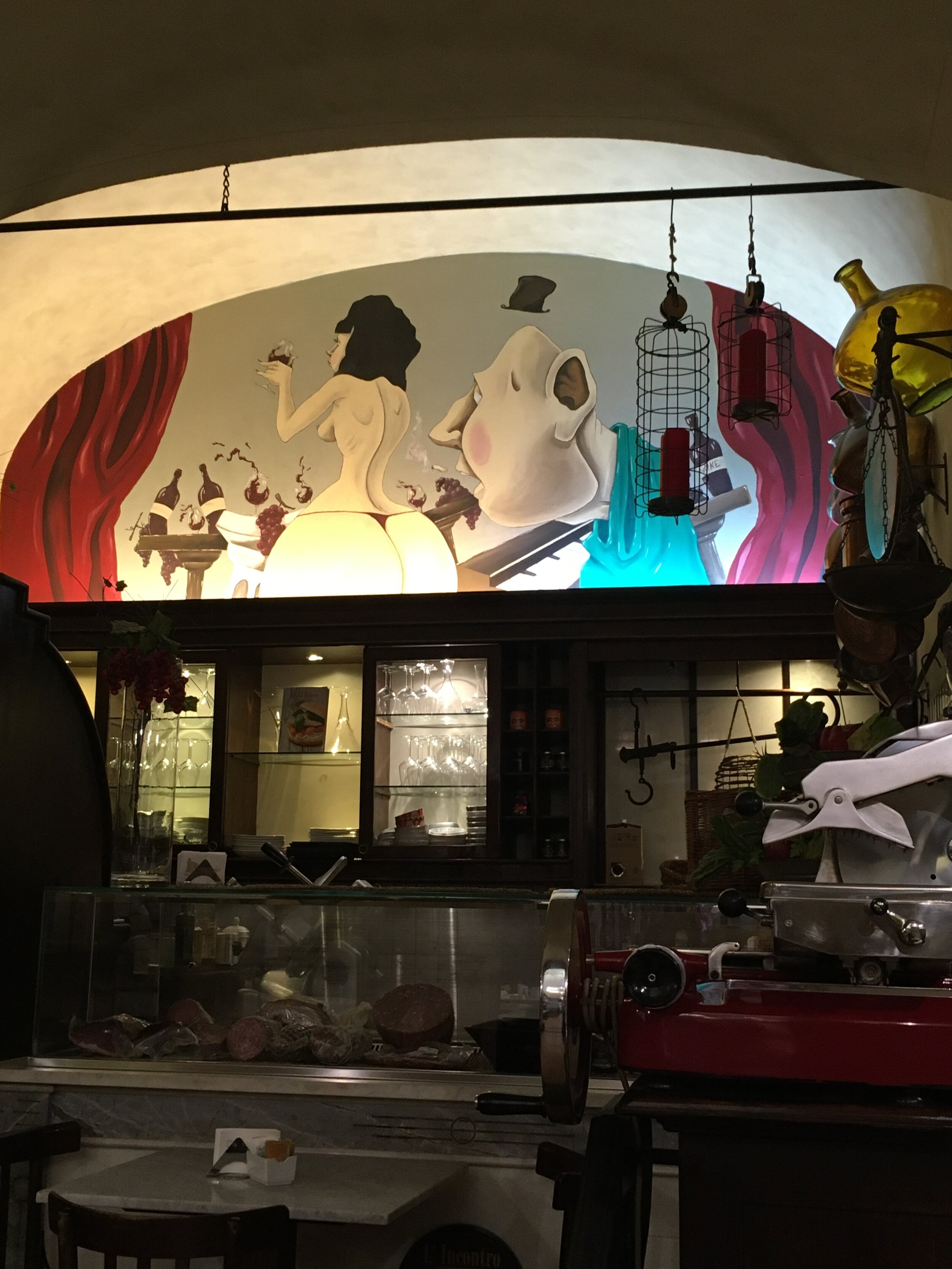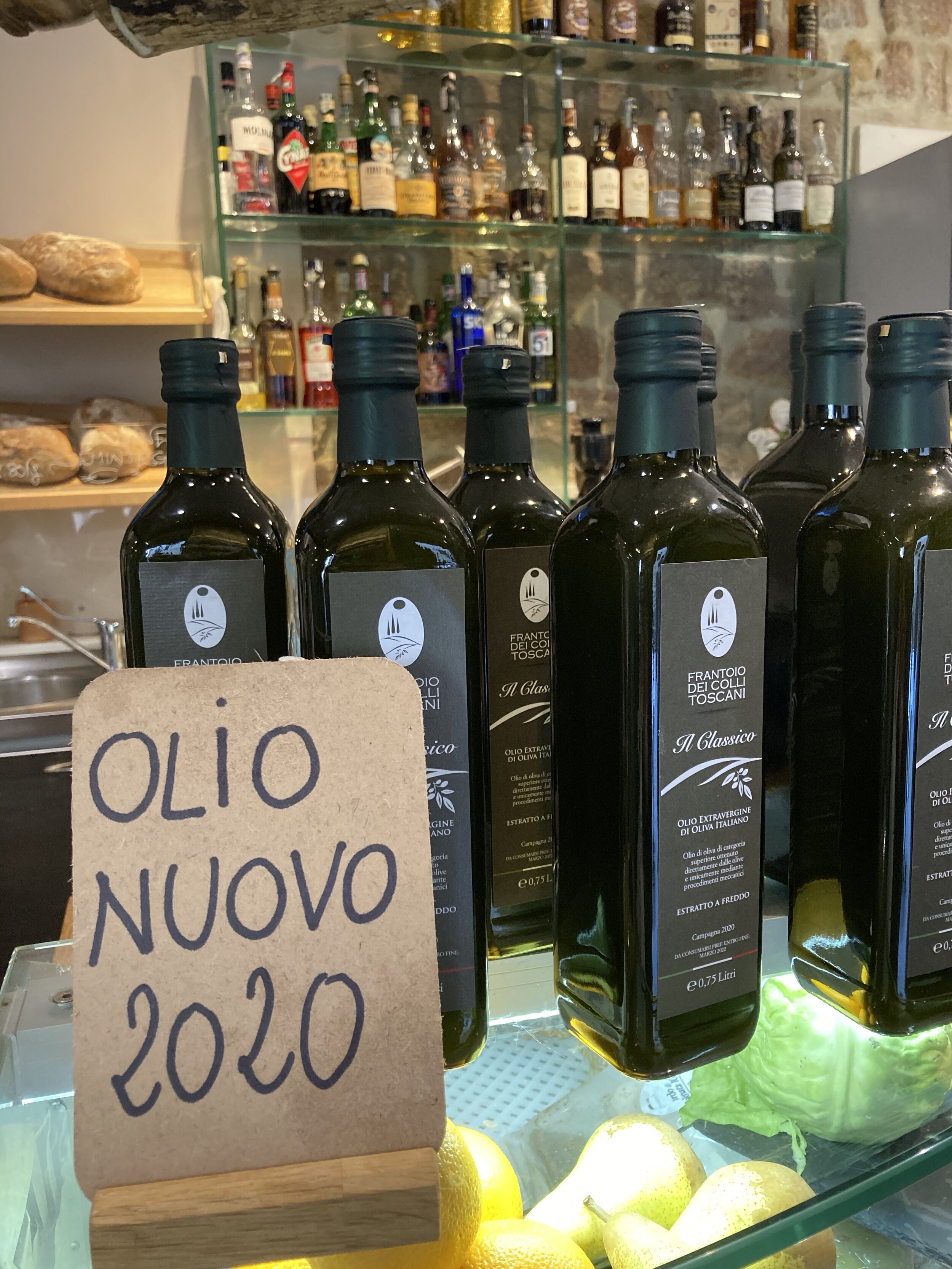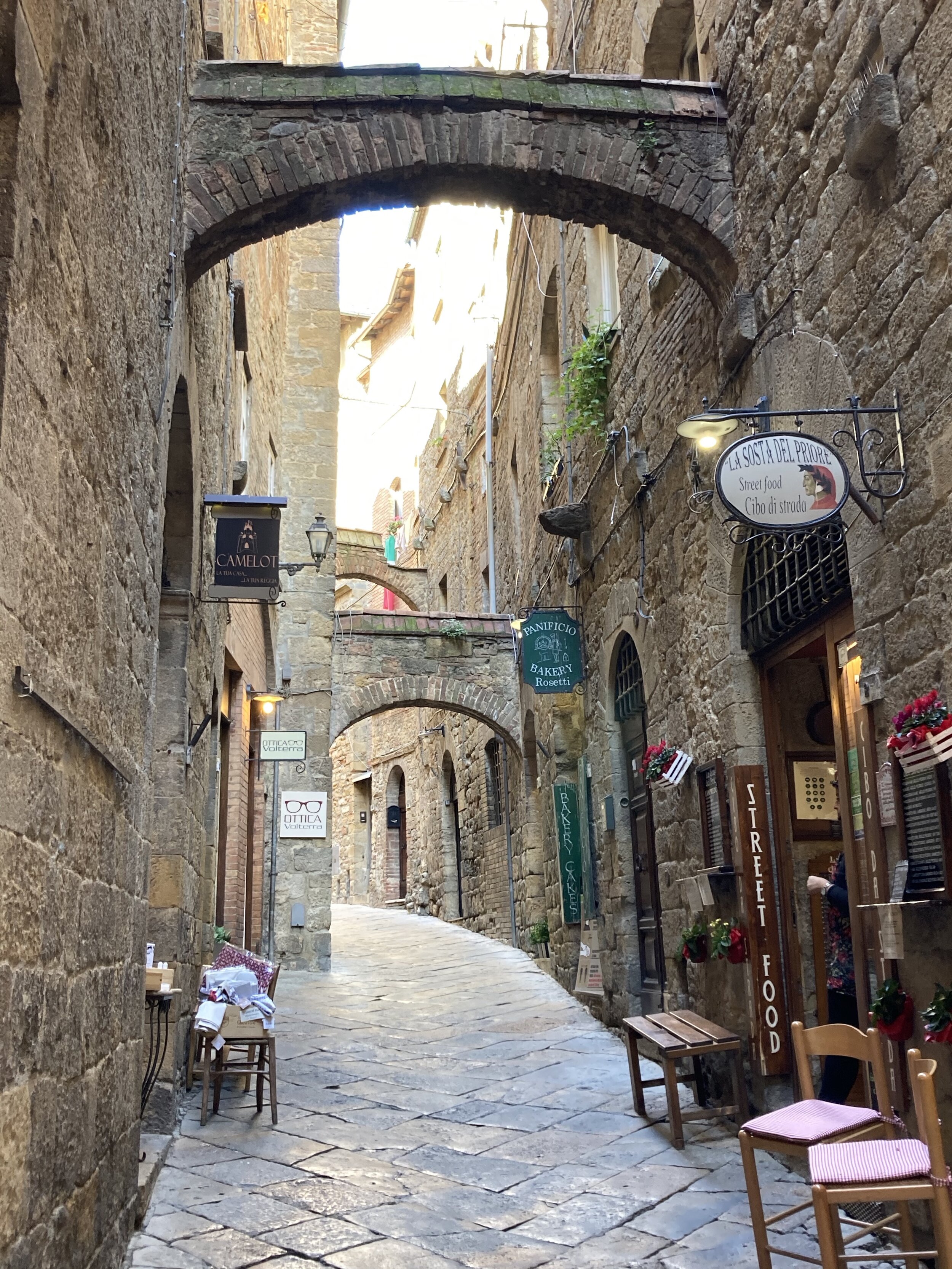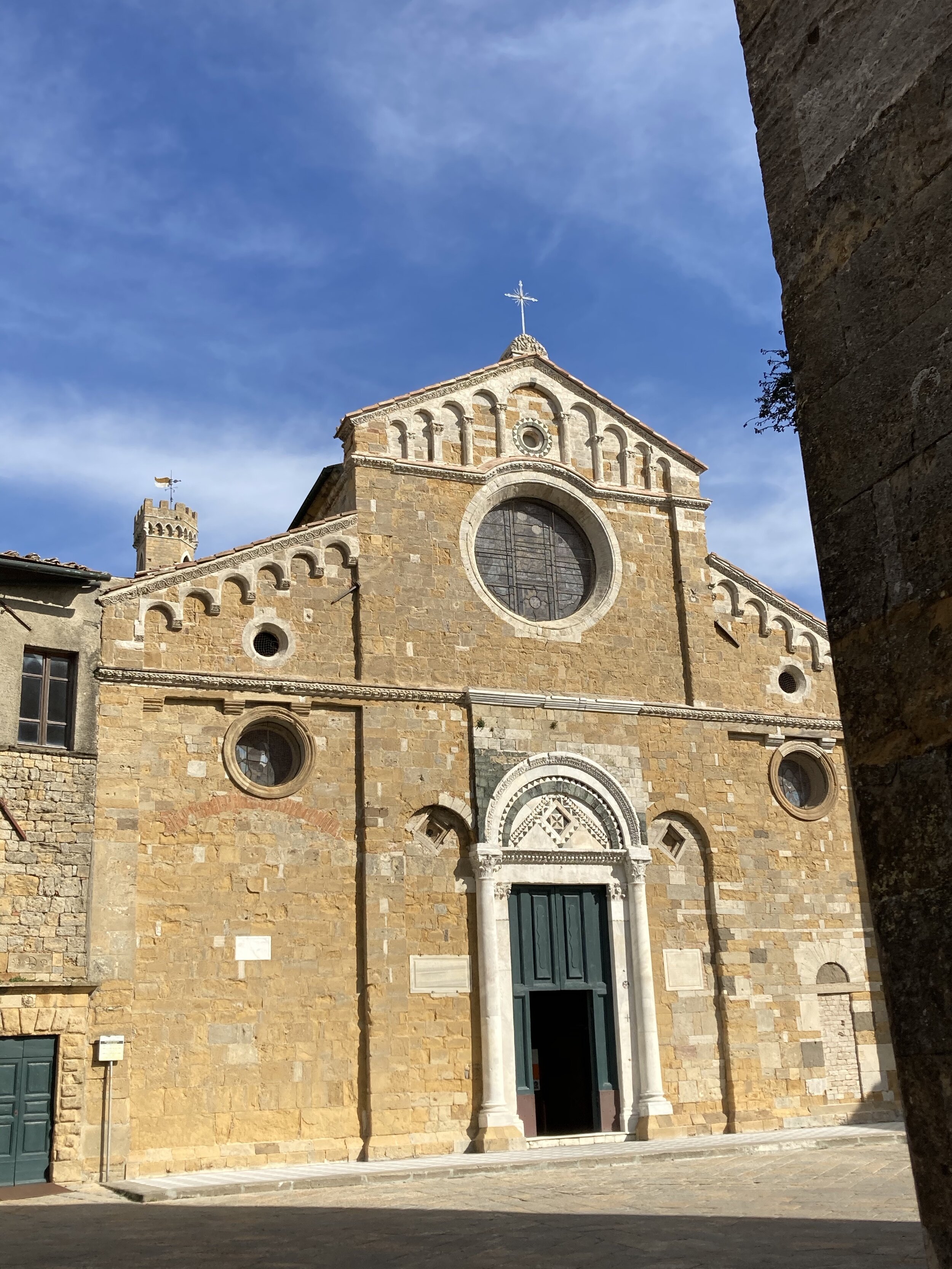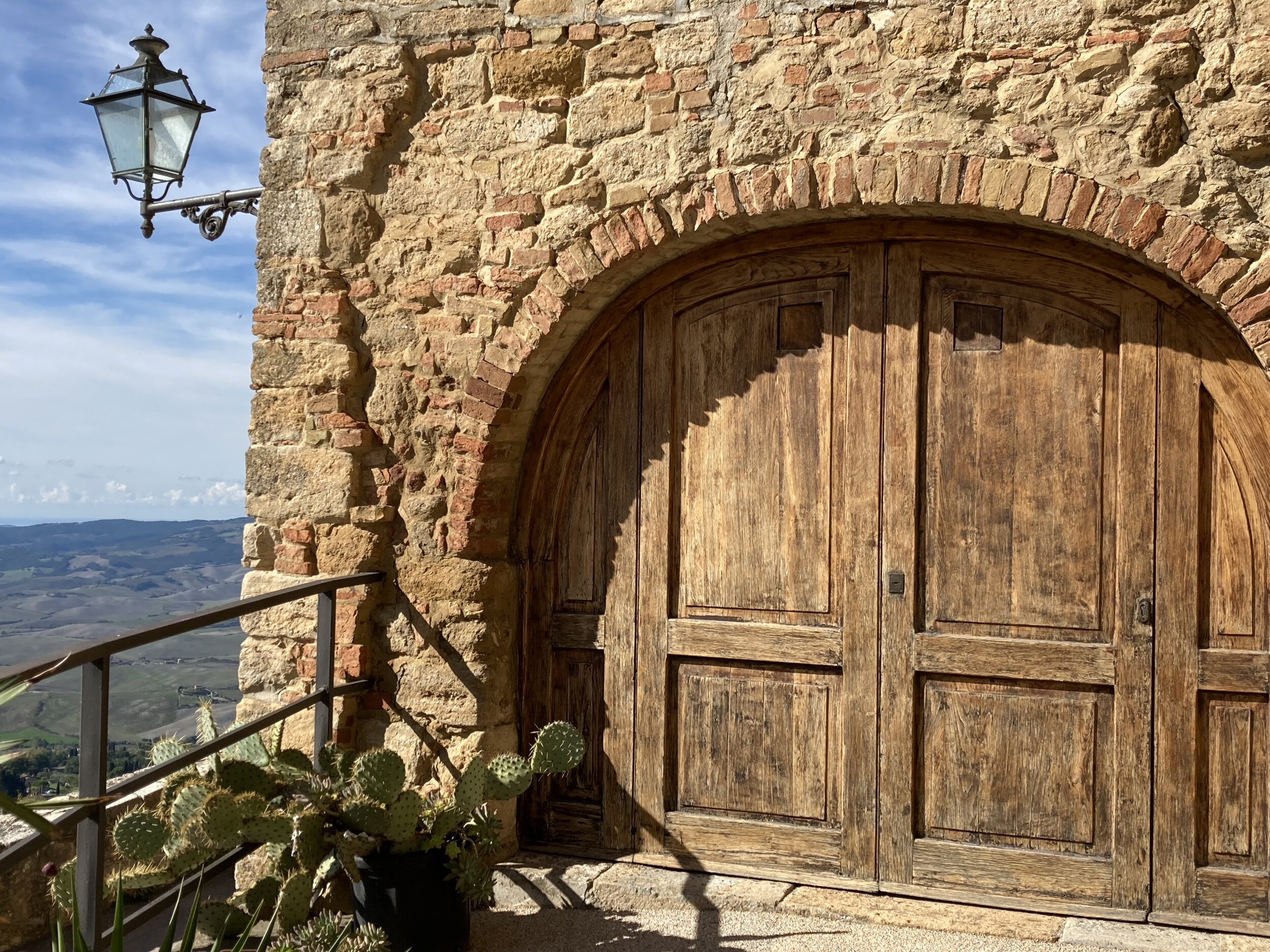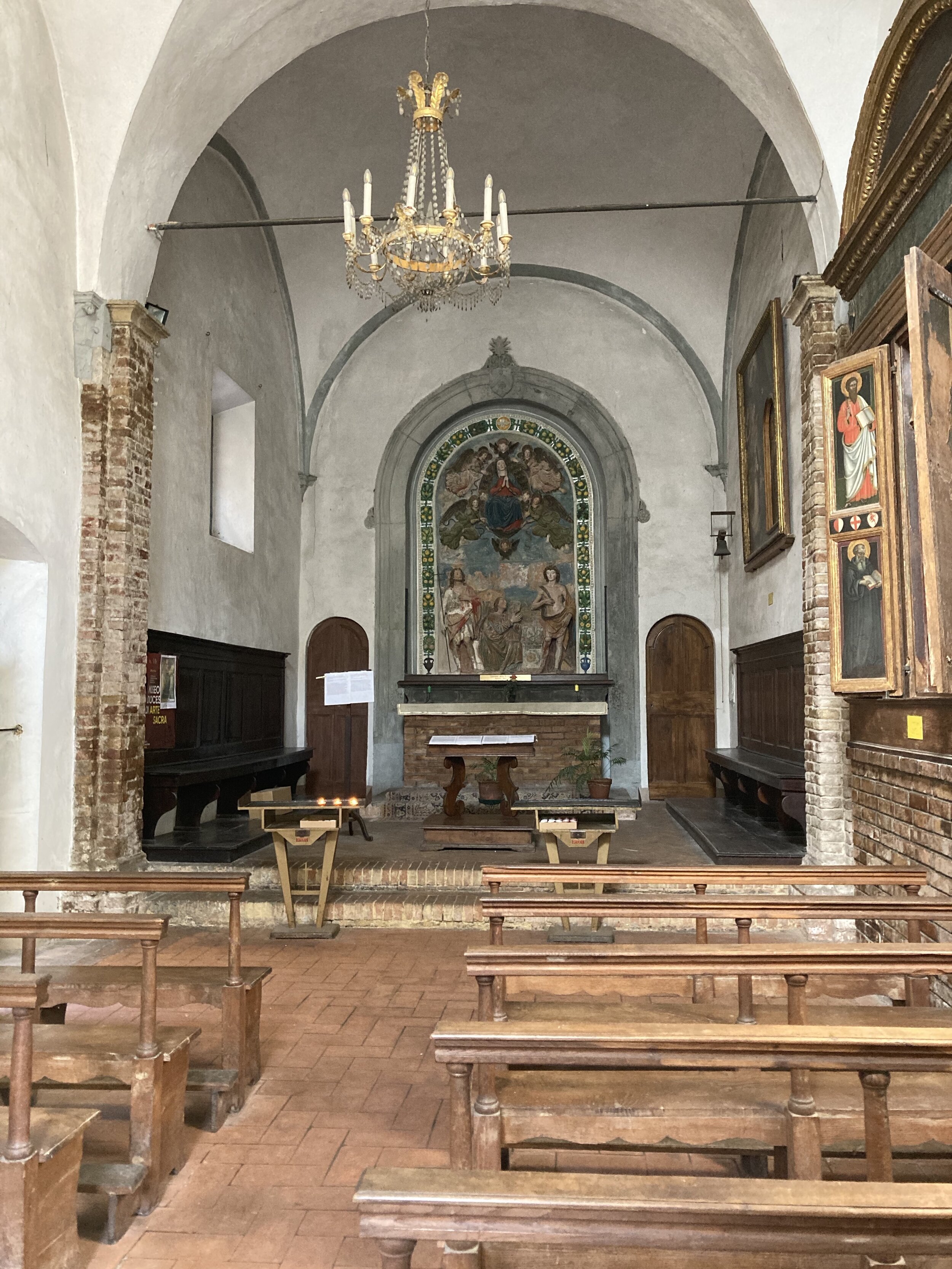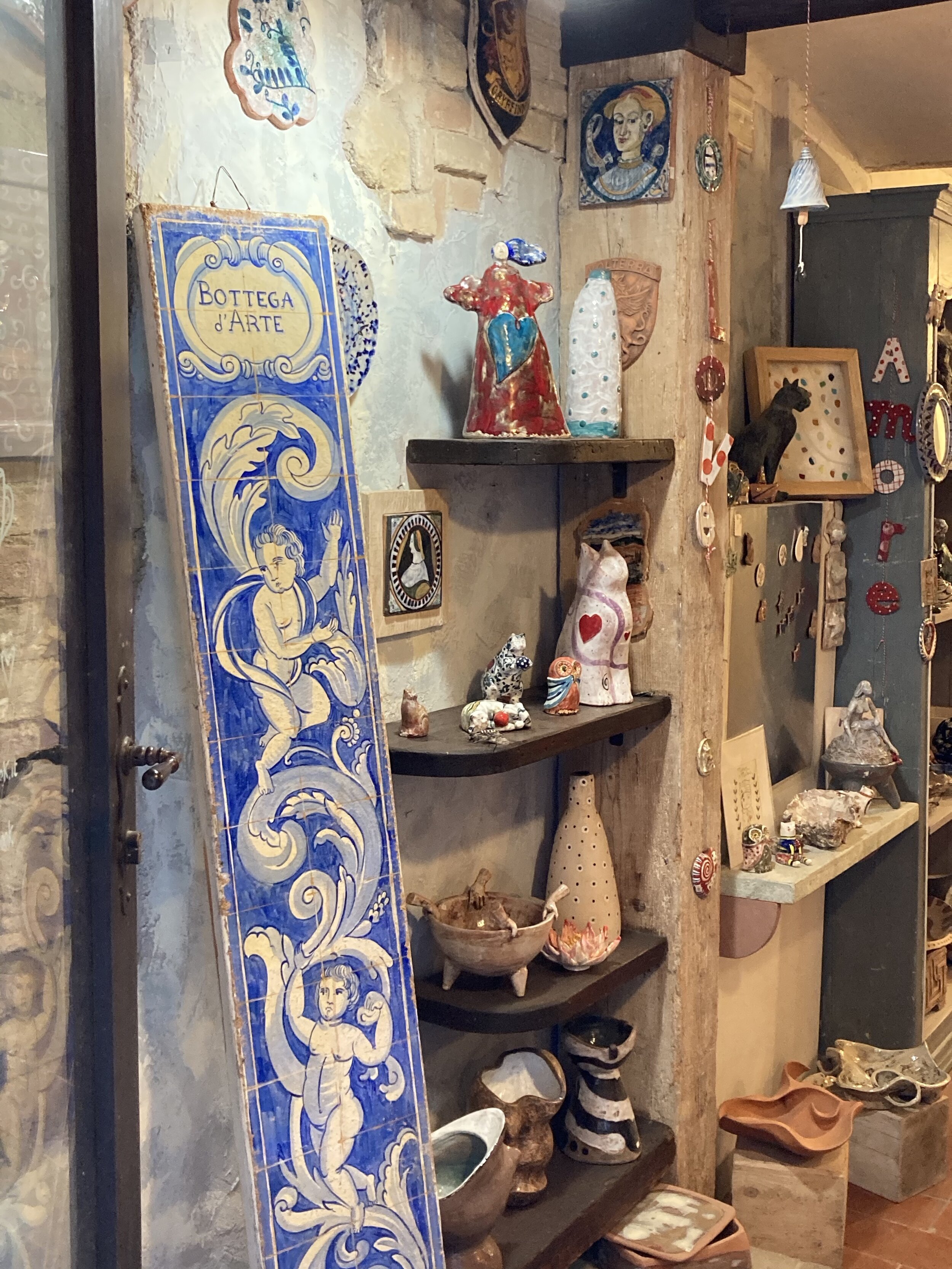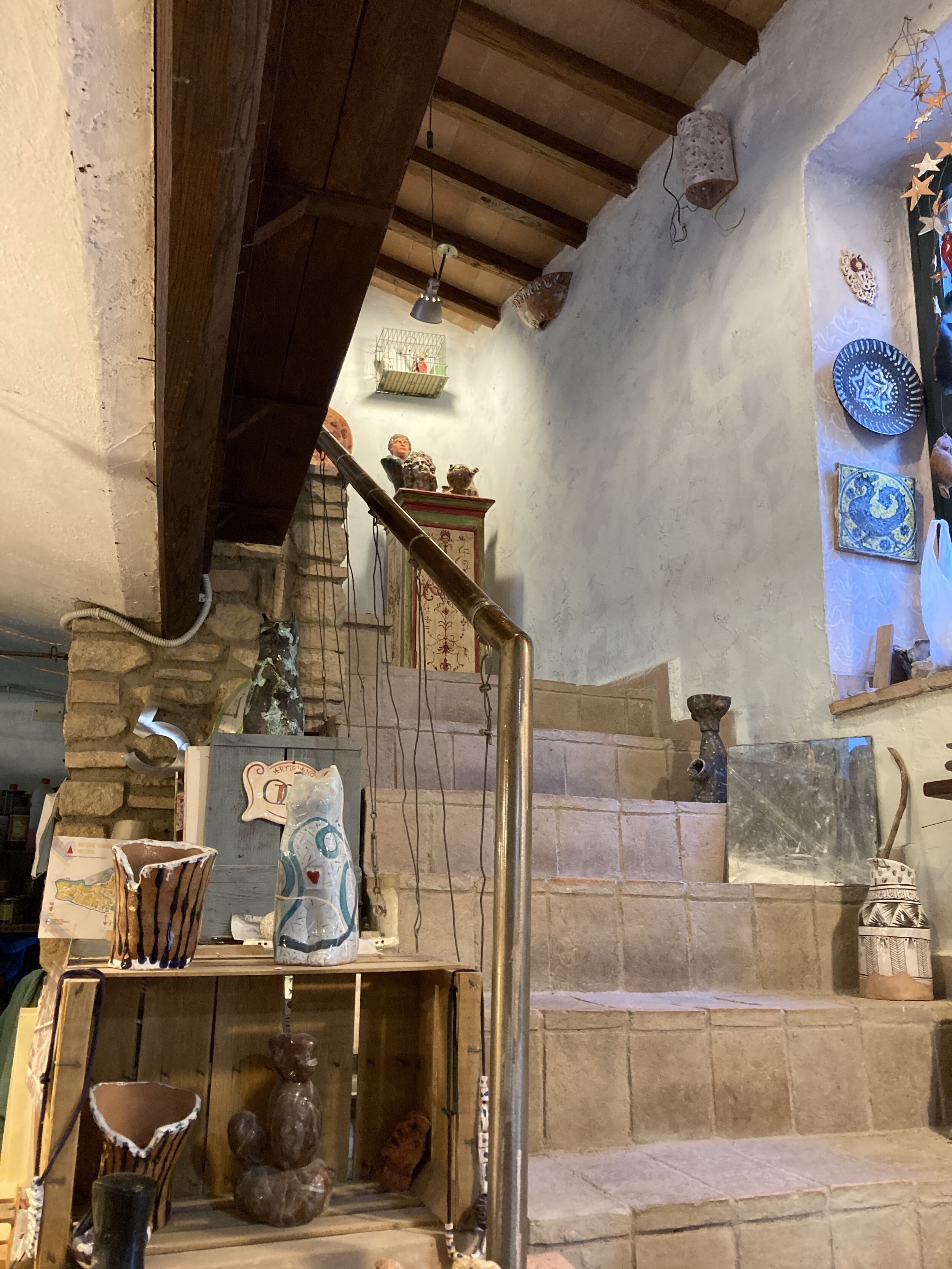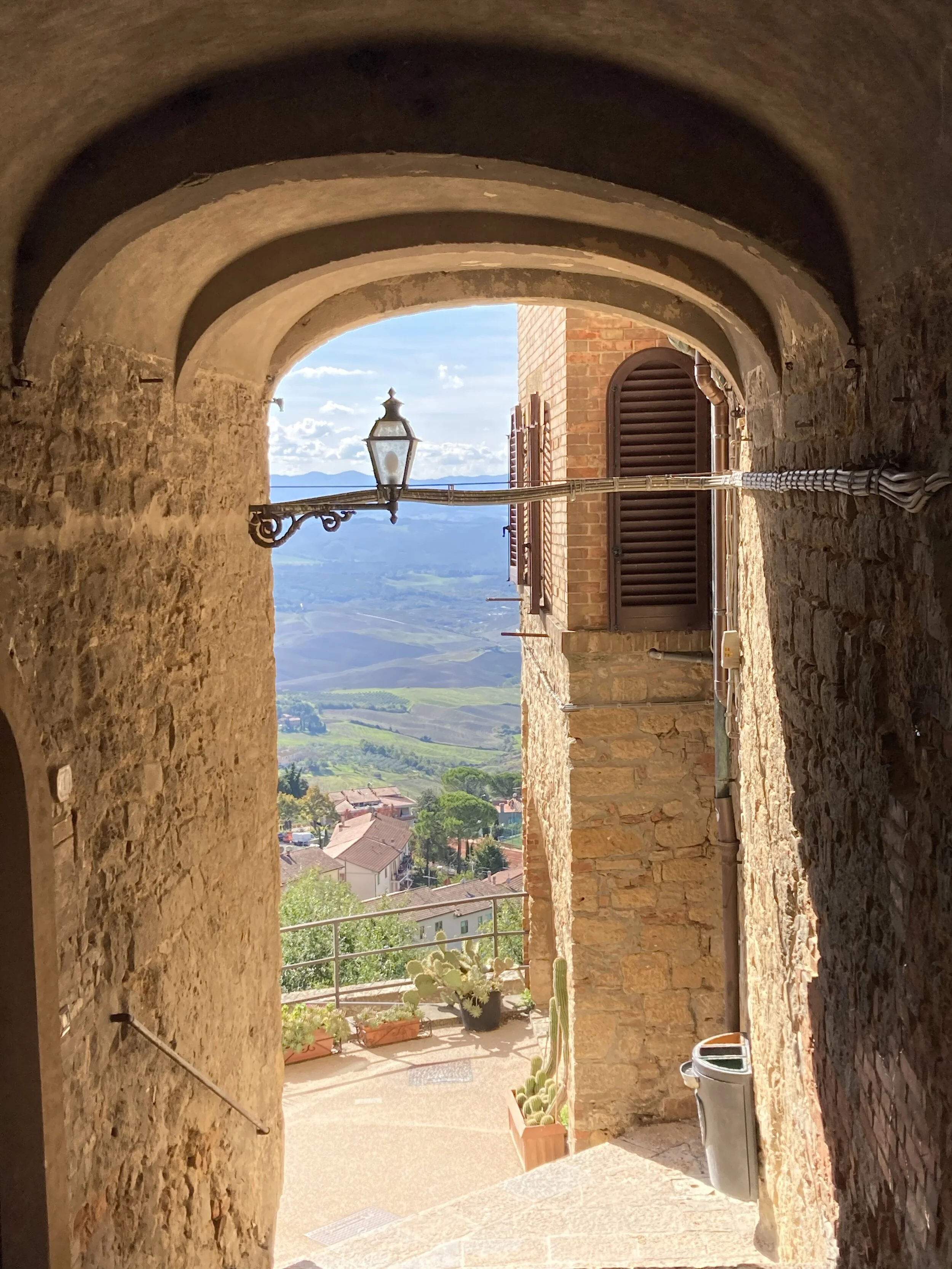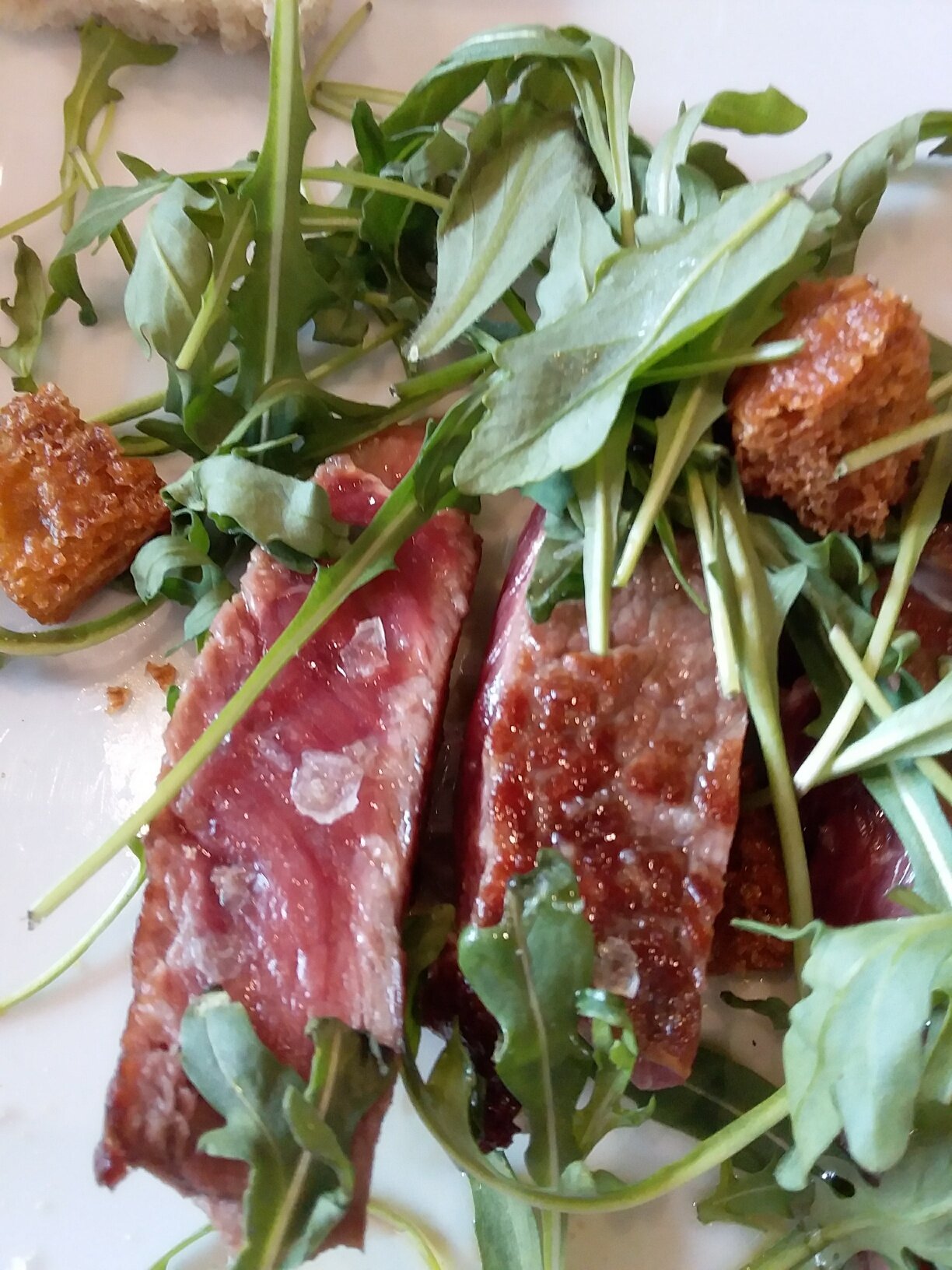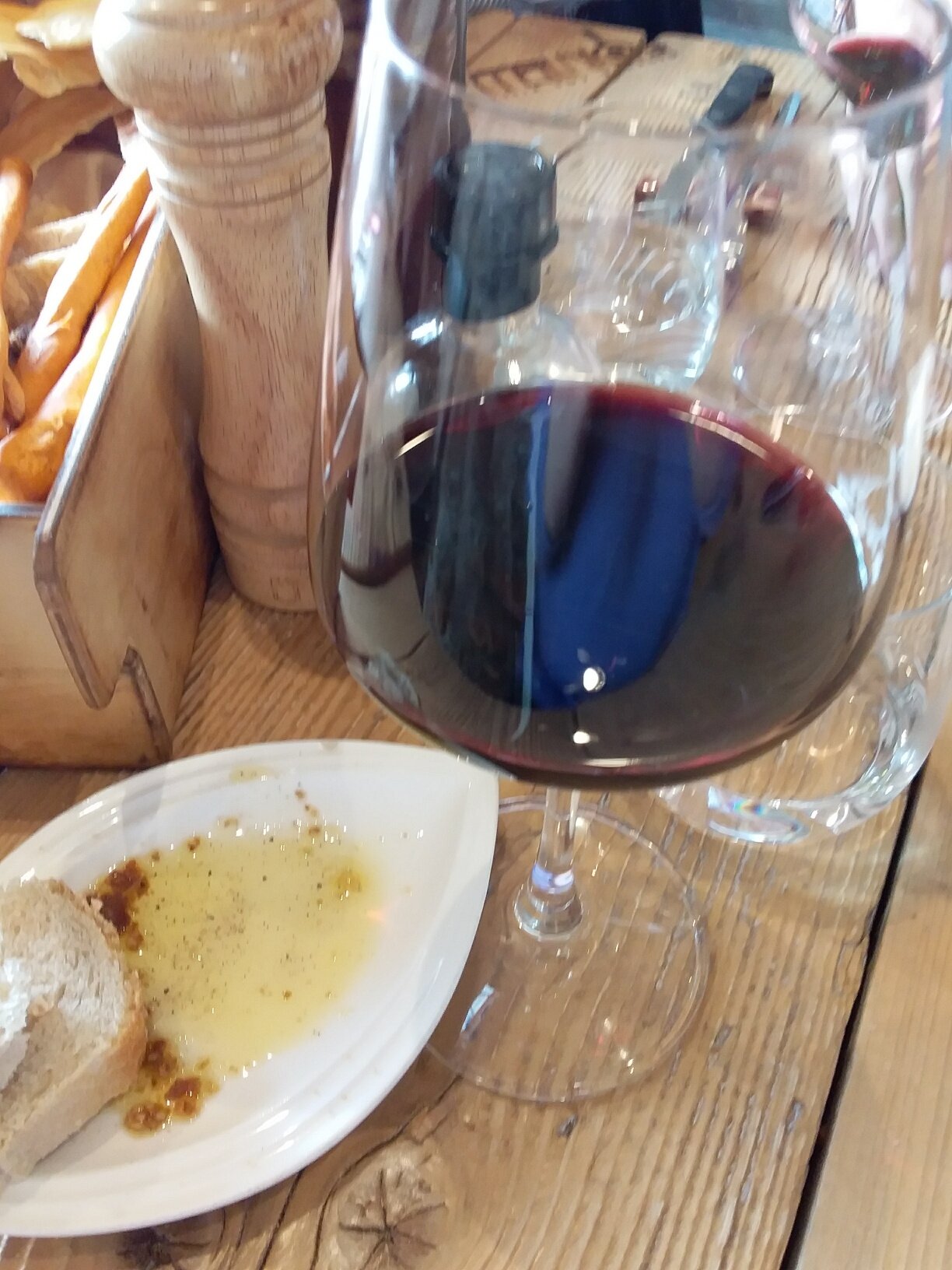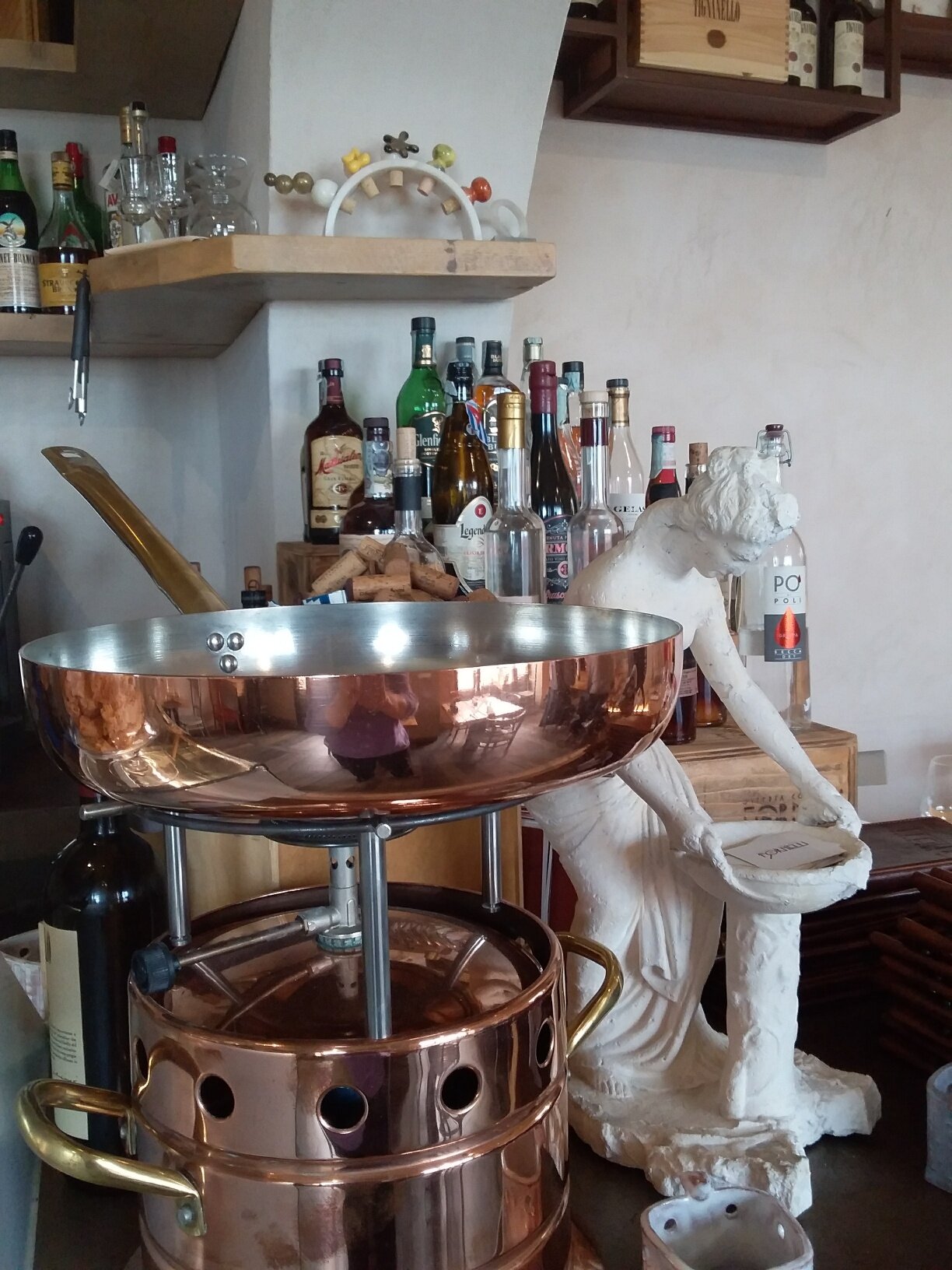Autumn in the Val d'Orcia
Tuscany is incredibly diverse. The land includes hills, valleys, mountains, forests, rivers, marshlands, lakes, and coastlines. There is even an island - Elba. Tuscany boasts small hilltop villages that few tourists have discovered, popular walled cities such as Lucca, the bustling port city of Livorno, Florence which is famous for its art and architecture, industrial areas and transportation centers. Whew - I could go on and on describing all the different aspects of Tuscany.
But when you ask someone to close their eyes and picture Tuscany, the image they are very likely to conjure is one of soft hillsides dotted with farmhouses, winding roads lined with tall cypress trees, fields terraced with grapevines, and groves of olive trees. This classic image of Tuscany comes from one specific area - the Val d’Orcia.
A classic Tuscan landscape, just outside of the small hamlet of Montichiello in the Val d’Orcia
The Val d’Orcia lies in south central Tuscany, beginning just south of the city of Siena. The whole region - comprised of the municipalities of Montalcino, San Quirico d’Orcia, Pienza, Castiglione d’Orcia, and Radicofani - is a UNESCO World Heritage site. There are no big cities in this region. Small towns and even smaller picture-perfect hilltop villages are scattered throughout. Driving around the Val d’Orcia provides one astonishing view after another. Gorgeous at any time of year, seeing the Val d’Orcia in fall is a special treat.
After the harvest, grape leaves turn gold and red on the vines
The colors of autumn, as the leaves on the grapevines turn gold and then red, the olives ripen on the trees, the valleys and oak forests shimmer with color, are nothing sort of breathtaking. I was fortunate to spend a week in this area in late October / early November - peak color season. Each day brought changes - deepening hues on the grapevines, vines which seemed on fire as their red leaves climbed up stone walls, waves of yellow in the fields, ground covered with oak leaves which crunched beneath my feet as I walked, and the sound of acorns falling from the trees.
As a bonus, the autumn skies had ever changing cloud formations and mornings often began with deep fog rolling down the valley, cloaking familiar sights in an air of mystery.
As for the autumn sunsets and moonrises - wow.
Dusk in the Val d’Orcia, from the grounds of Agriturismo Cretaiole near Pienza
The Val d’Orcia is beautiful when viewed close up on a walk or on a drive, but is even more spectacular when viewed from high up in a hill town. There is something deeply moving about these small hill top villages, about the land here, and about the changing seasons view from above. It fills me with a sense of peace, hope, and the feeling that everything really will be all right with the world, everything in its season.
Fall seen from Montepulciano which lies just beyond the border of the Val d’Orcia
As Italy entered into a “soft” lockdown (less restrictive than last spring, more restrictive than summer and early fall), I felt incredibly fortunate that it was still possible for me to travel to this part of Tuscany and experience the wonder of autumn in the Val d’Orcia. The experience was not diminished by the need to wear masks outdoors, the lack of evening dining (the latest decree meant that restaurants had to close by 6pm that week), frequent hand washing and never being far from a bottle of hand sanitizer, and the closure of many shops. In fact, I think those restrictions gave me a deeper appreciation for the things we can still do and the beauty we can still experience. And next year, when (fingers crossed) things open up again, I hope that visitors will once again return to this region. The area will need our support to recover from this year of economic hardship and we will need the beauty of these places to help restore our spirits.
Sunset, near Pienza, early November 2020




